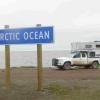Gents, I looked at the lay out of my roof given the vents and the installed Yakama tracks. I think I can get 4 of these (100w Newpowa flexible) panels up there between the obstructions. Reading this forum is seems like it is not advised to glue directly to roof since the heat from the panel has no where to go and then the panel gets very hot. The heat can damage the panel. I saw where some guy (Tito?) put a thin, channeled/ribbed piece of plastic between the panel and the roof to provide an insulate barrier.
First off, That thin insulating barrier may protect the roof from heat but I don't see how it is helping the panel off-load heat. Am I missing something? Isn't the idea to provide some means for the panel to transfer heat not insulate the roof??
It seems like many people build a bracket and then thy have big air gap to allow the heat to dissipate. The downside to this is the air drag 24/7 as you drive down the road.
I wonder about industrial double sticky foam tape fully across the top, the middle and the bottom? Get the kind that is 1/8" thick with foam to provide some air gap. I would probably also tape the leading edge for pealing tendencies from the wind.
thoughts?
Steve















